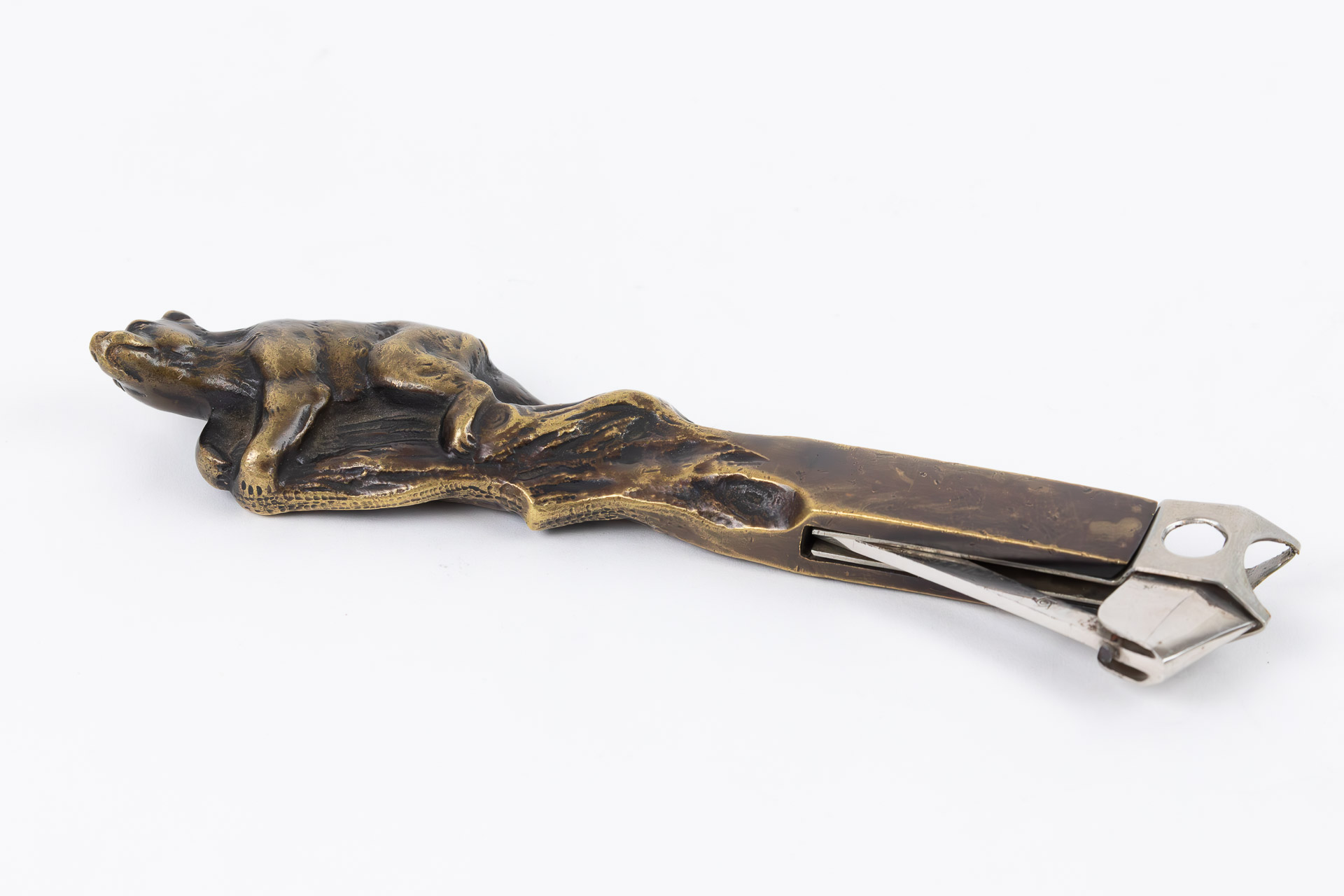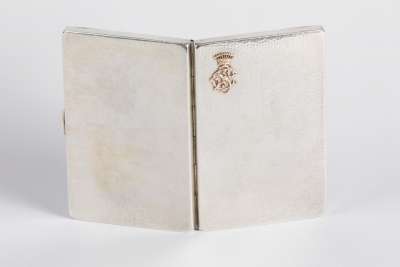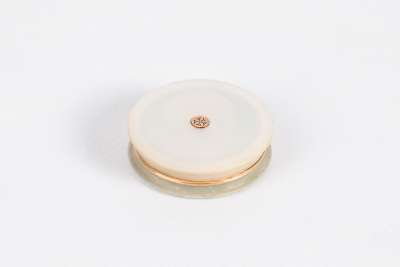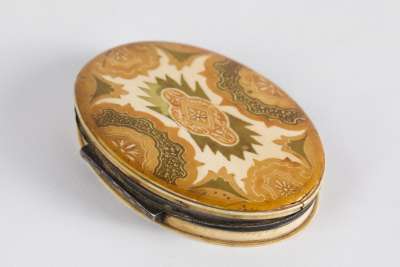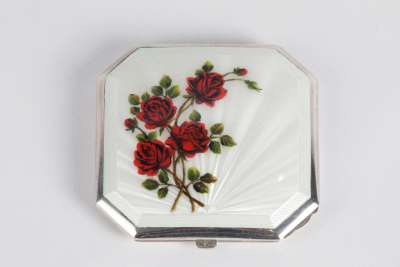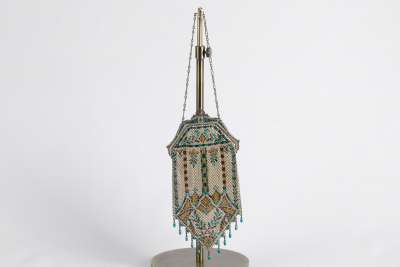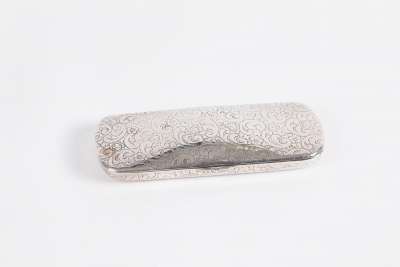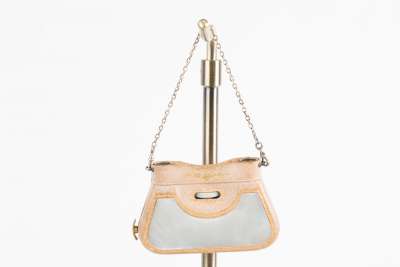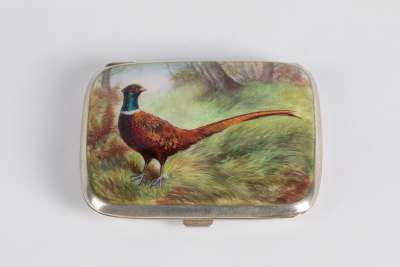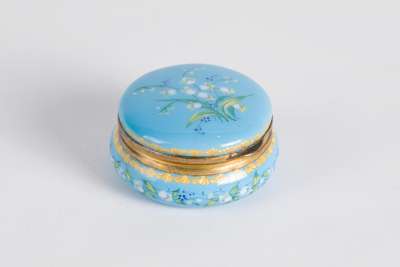This early 20th-century Austrian cigar cutter is a distinctive piece, sculpted from bronze, and showcases the finely detailed figure of a bear perched atop a log. The bear is depicted with intricate attention to anatomical precision, capturing the essence of the animal's natural form. Crafted circa 1910, this piece represents the era's fascination with incorporating natural motifs into functional objects. The cutter mechanism is ingeniously integrated into the base of the log, where a cigar can be inserted for clipping. Such items were emblematic of the period's dual focus on utility and decorative artistry, making them highly prized by collectors and enthusiasts alike.
Condition Report
This Austrian bronze cigar cutter is in good condition, reflecting minimal wear that is consistent with its age and historical use. The detailed bronze bear and log display a patina that is typical for metal objects of this vintage, adding to its authenticity and charm. A minor note is the absence of a small screw at the base near the cutter mechanism, which does not detract from its functionality or overall appearance. Such signs of age are expected and contribute to the historical narrative of the piece, offering insights into its journey through time.
Dimensions
Weight: 325gm, Length: 18cm, Width: 4cm, Height: 2cm.
A Genteman's Accessory for the Smoking Room
This bronze cigar cutter was originally intended as a practical accessory for the discerning gentleman's smoking room. During the early 1900s, cigars were a popular indulgence, and the act of smoking was often accompanied by rituals that included the use of elegantly designed tools. The bear motif served not only as an artistic embellishment but also as a conversation starter, reflecting the owner's taste and status. This cutter allowed its owner to prepare cigars with precision, making it an essential tool while also serving as a decorative tabletop ornament.
Art Nouveau Influence in Decorative Arts
This cigar cutter exemplifies the Art Nouveau style, characterised by its emphasis on natural forms and structures. The choice of a bear as the central motif reflects the movement's fascination with nature and wildlife, commonly seen in European decorative arts of the time. Art Nouveau artists aimed to harmonise function and form, creating pieces that were both useful and visually engaging. The naturalistic rendering of the bear and the fluid lines of the bronze log are hallmarks of this style, making the cutter not only a tool but also a piece of art that captures the spirit of its era.
Bronze Casting Techniques of the Early 20th Century
The creation of this bronze cigar cutter involved skilled craftsmanship, employing traditional bronze casting techniques prevalent in the early 1900s. Artisans of the time would have used the lost-wax casting method, a process that allows for detailed and intricate designs. This technique involves creating a wax model of the desired shape, which is then encased in a mould. Once the wax is melted away, molten bronze is poured into the cavity, capturing every detail of the original design. The piece would then be finished by hand, with artisans refining the textures and patina to achieve the final appearance.
Austrian Craftsmanship and Makers
While the specific maker of this cigar cutter remains unidentified, its craftsmanship is indicative of the high standards of Austrian metalwork from this period. Austria, particularly Vienna, was a centre for the production of fine metal objects in the early 20th century. Artisans from this region were renowned for their ability to blend artistic creativity with meticulous technical execution. The use of animal motifs was a popular trend, influenced by the broader European decorative arts movements of the time, and Austrian makers were adept at incorporating these themes into their work.
Highly Sought-After Collectibles
This type of antique, particularly those featuring animal motifs and crafted from quality materials like bronze, are highly sought-after by collectors of early 20th-century decorative arts. Items such as this cigar cutter offer a glimpse into the lifestyle and cultural values of the era, appealing to collectors interested in both the functional and artistic aspects of historical artefacts. The popularity of tobacco-related collectibles has remained strong, and this piece represents a niche within that market, appealing to those with a keen interest in the intersection of utility and design during a fascinating period of artistic evolution.
